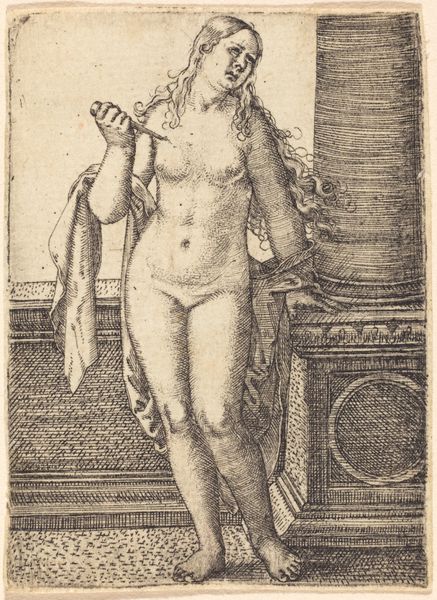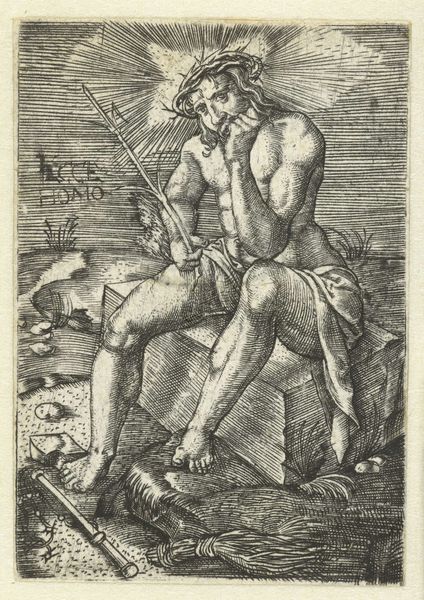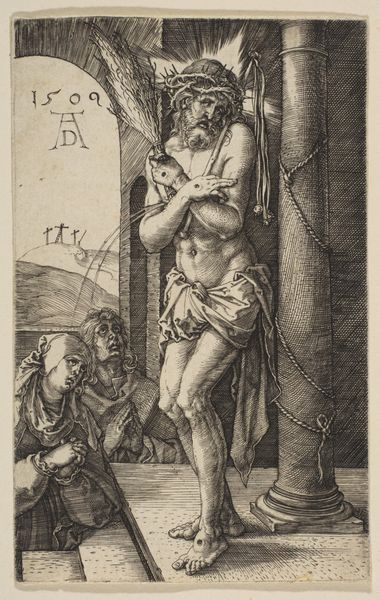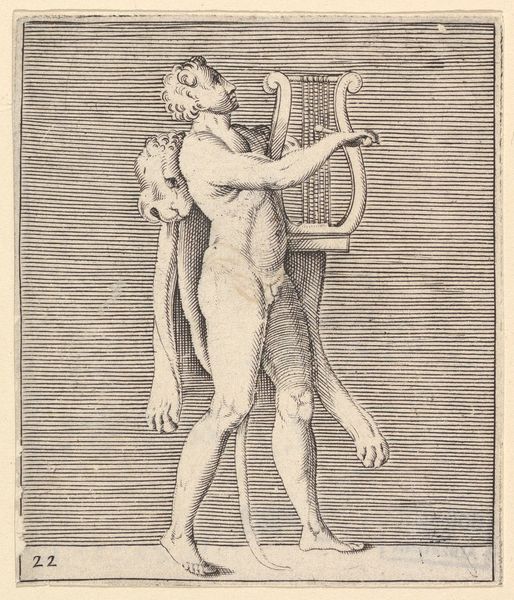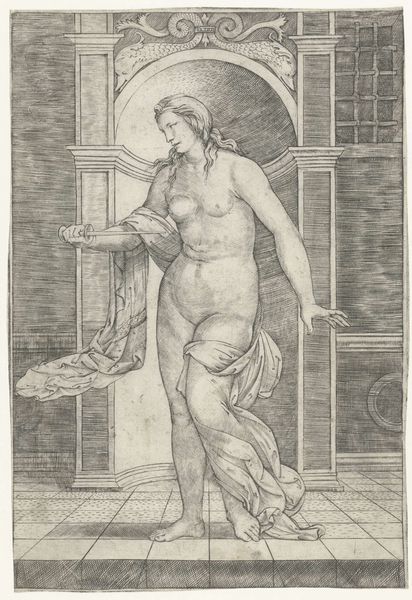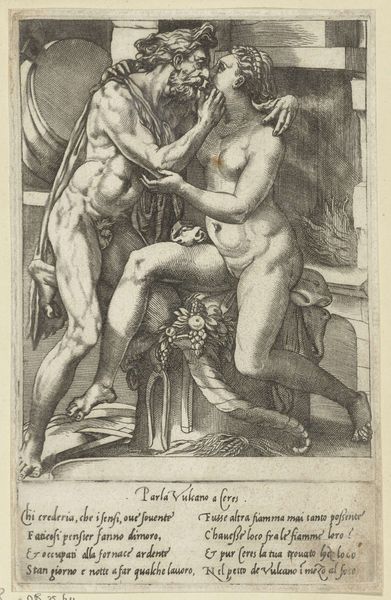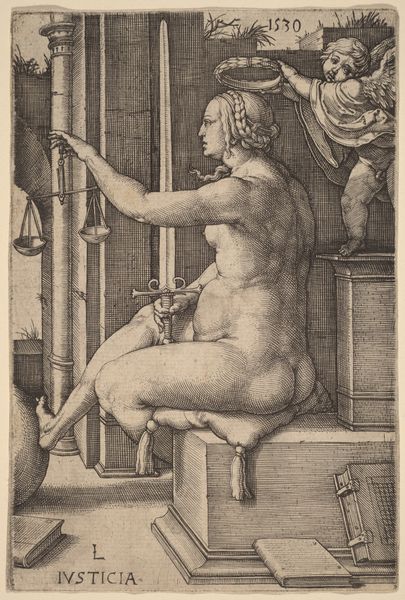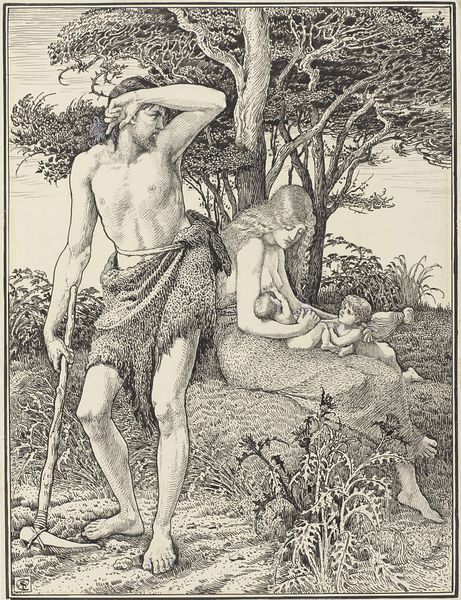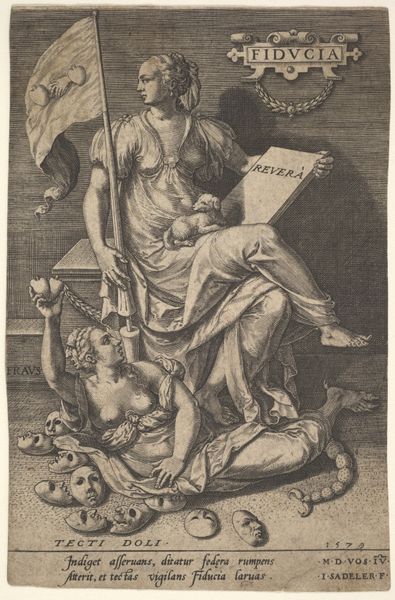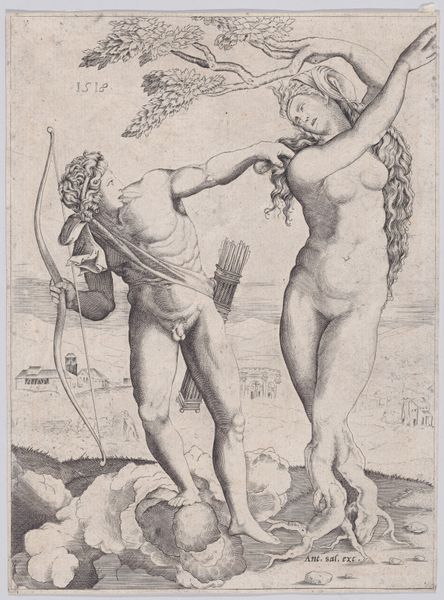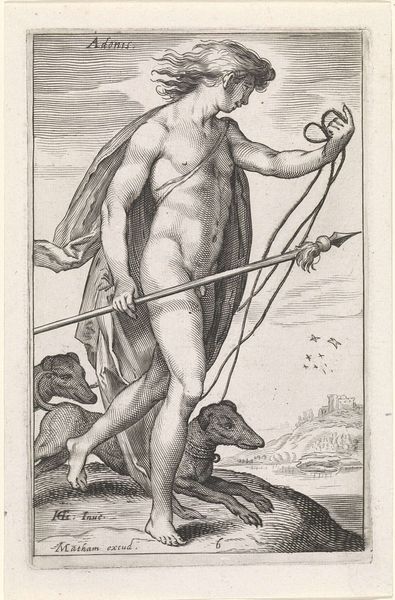
print, intaglio, engraving
#
allegory
# print
#
intaglio
#
figuration
#
11_renaissance
#
line
#
northern-renaissance
#
nude
#
engraving
Copyright: National Gallery of Art: CC0 1.0
Editor: This engraving, "Iusticia," is by Master I.B. and appears to be from the Renaissance. It depicts a nude female figure with scales and a sword, and overall strikes me as somber and a little world-weary. What do you see in this piece? Curator: The figure’s languid posture indeed conveys a certain resignation. But it’s important to understand that this “Justice” isn't just a passive representation of an ideal. Consider the historical context: the Northern Renaissance grappling with social and religious upheaval. The nude female form, while classical, also defies easy categorization. She is powerful yet vulnerable, an embodiment of justice burdened by the very systems she upholds. Editor: Burdened how? Curator: Look at the setting—it seems to be neither indoors nor outdoors but situated between the two. This points to the blurred lines between the personal and political spheres and invites contemplation of whether justice is fairly accessible for everyone. The scales are present, but Justice herself is almost too tired to hold them. What does that suggest about the state of law and order? Editor: So, her nudity isn’t simply aesthetic? Curator: Absolutely. It challenges societal expectations and notions of how Justice ought to present herself and makes one think about why laws are disproportionately set against certain bodies more than others. Master I.B. seems to ask if justice, as practiced, truly reflects its ideals, or if it perpetuates existing power imbalances. This tension, visualized through her weary pose and the contextual clues within the image, opens up dialogues about accountability in the application of legal authority. Editor: That’s fascinating. I came in seeing just a classical figure, but now I recognize a much more layered critique of power and its impact. Curator: Exactly! And that is why art history matters; it equips us to engage more critically with our present. Justice isn’t blind, it's looking, and sometimes what it sees, or what we see through it, isn't pretty.
Comments
No comments
Be the first to comment and join the conversation on the ultimate creative platform.

